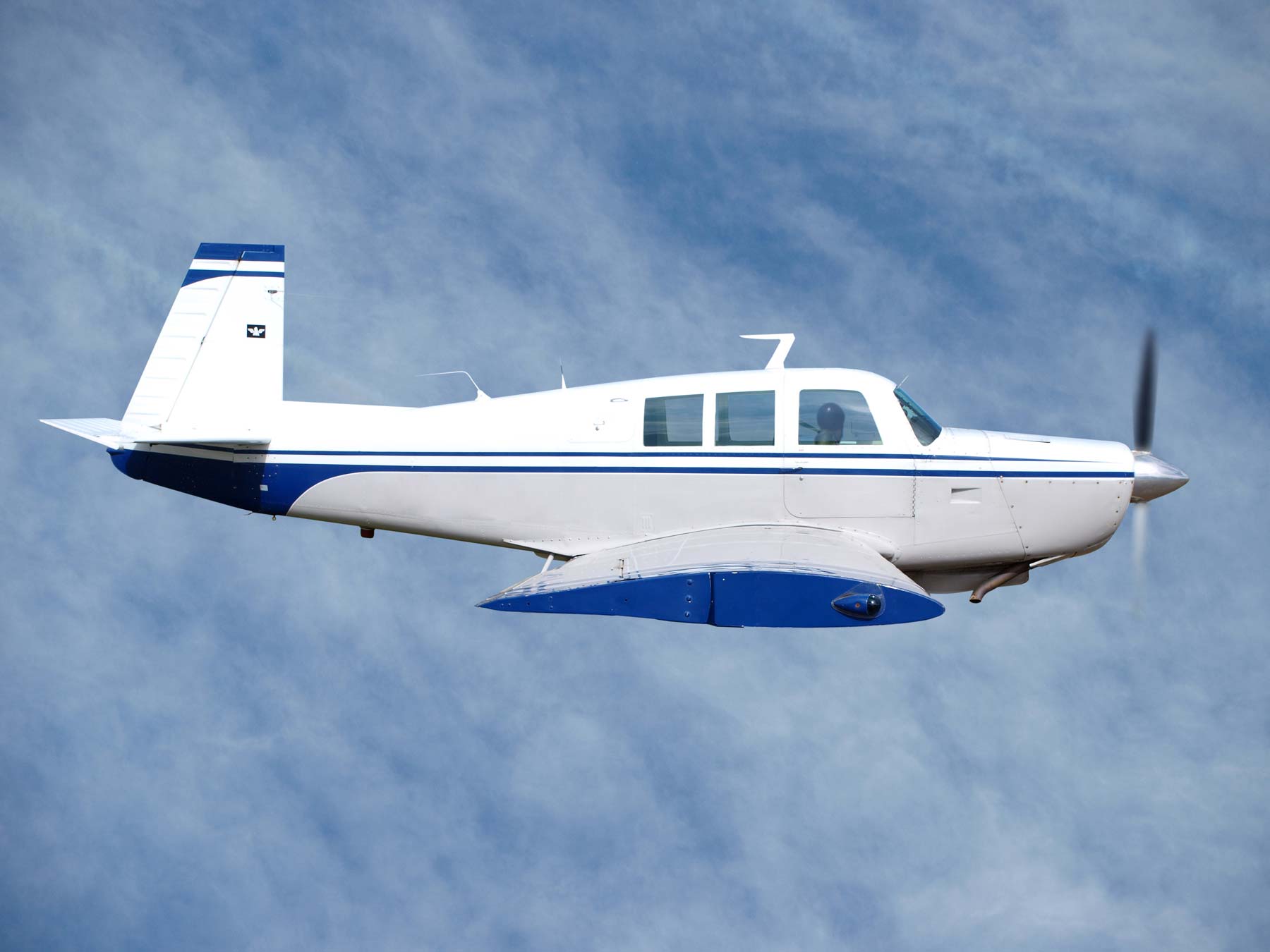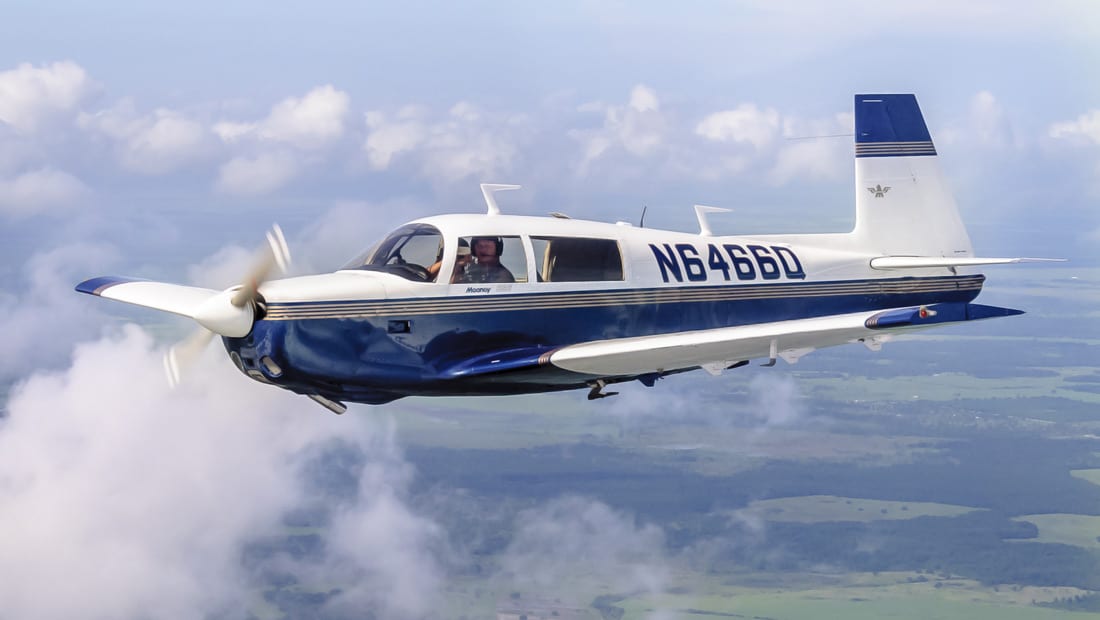MooneyDriver78
En-Route
- Joined
- Aug 13, 2013
- Messages
- 4,538
- Display Name
Display name:
Tom
This looks a lot like the NACA 63-215 I posted. (The tip is a NACA 64-412 )

How about this one, closer view:

Tom
This looks a lot like the NACA 63-215 I posted. (The tip is a NACA 64-412 )



Stall characteristics, room for gear, more room for spars, I would assume that a lot of things went into the decisions. But to be clear, I ain't no professional aircraft designer.Now you’re going to make me look, next time out, I’ll take a straight edge to it.
So the camber change is to get the root to stall first before the tips?
So the camber change is to get the root to stall first before the tips?
I got that part - I wanted to know what new airplane you *would* buy.
I just installed a Garmin GMU-11 in my mooney wing where you have to align it to within 2 degrees in all 3 axis. I can guarantee you that it aren't flat on the bottom. The back part is flat-ish, but if you look at the whole chord, it's not even close to flat.I don’t where you got your diagram, but the Mooney wing airfoil is basically flat on the bottom side, anyone who has spent time removing the zillions of screws for the inspection plates can tell you this.
Tom
You're looking at the spanwise washout in that photo, not at a change in curvature.Compare the curve near the root at the edge of the blue with the tip - you can see how the bottom is much more curved inboard...
Which has a very curvy bottom.This is a design derived from the P-51 airfoil.
...Perhaps, but the colloquial understanding has always been "piston piddle pack puddle jumper death trap"...
But then, how many times has Mooney been through this?
How many times has Mooney closed and then reopened? 4 or 5 over their history?
Cramped
This is a predictable outcome, IMO. Not having a parachute is the key issue.
I think of Cirrus as the hands down leader in GA right now - and they are - but seeing that Diamond is selling 90 or 100 planes really makes you wonder. Mooney couldn’t pull off but 6 planes in a year? How is that even possible?
My gut reaction is it has a lot to do with growing Americans and the size of the cabin compared to Diamond and Cirrus.
I think I also spot a stall strip in that image.
Because contrary to what owners of them will swear, they are cramp, uncomfortable planes compared to a Cirrus.
Even the pilot's seating position is contentious.
Bertorelli's blog had an interesting take on this. Would you drop a megabuck on a Mooney knowing that they've gone radio silent multiple times in the past and may stop returning your calls at some random point in the future?Lots of advertising, lots of Cirrus service centers, huge booths at the flyins.
Let’s be honest, the parachute is what catapulted Cirrus to the front. They have done an effective job of updating their products to keep them fresh and relevant making people want to continue to upgrade. but yes, marketing has kept them there. Lots of advertising, lots of Cirrus service centers, huge booths at the flyins.
I don’t find a Mooney to be THAT bad however, it’s no where close to Cirrus comfortable. The Cirrus interior is much nicer and more luxury car appearing with a massive color choice.
I suspect it has more to do with the glass fuselage and wings. They can get Mooney speeds and fuel burn with the gear welded down, something very attractive to pilots.Let’s be honest, the parachute is what catapulted Cirrus to the front.
This might be true for those who have enjoyed too many hamburgers and not enough exercise. My wife and I are not super trim, but not significantly overweight and we both fit really comfortably and I sit in an extremely comfortable flying position. If you are one who has controlled your food intake, I have doubts about whether or not you have ever flown a Mooney.
For all those sedentary hamburger eaters out there, the Cirrus may indeed be necessary.
This might be true for those who have enjoyed too many hamburgers and not enough exercise.
Let’s be honest, the parachute is what catapulted Cirrus to the front. They have done an effective job of updating their products to keep them fresh and relevant making people want to continue to upgrade. but yes, marketing has kept them there. Lots of advertising, lots of Cirrus service centers, huge booths at the flyins.
I don’t find a Mooney to be THAT bad however, it’s no where close to Cirrus comfortable. The Cirrus interior is much nicer and more luxury car appearing with a massive color choice.
How about this one, closer view:

Tom
Stall characteristics, room for gear, more room for spars, I would assume that a lot of things went into the decisions. But to be clear, I ain't no professional aircraft designer.
Wouldn't a "normal" swept tail configuration add several knots?
There's more to it than that though.. while the latest generation was extremely fast it also had pathetic payload capabilities to the point where you cannot buy it with air conditioning and FIKI together, the Garmin integration is also much more "out of the box" and less integratedThis is a predictable outcome, IMO. Not having a parachute is the key issue.
What's more, it's cheap. The horizontal stabilizer is exactly the same construction as the vertical. They take 3 of them and make the empennage.Don’t see why it would.
Swept surfaces have a place on planes capable of supersonic or transonic flight. Other than that I think it’s just for style and that it “looks fast”.
Certainly part of it, but if that were the only thing we'd see soaring sales for the after market BRS kits if buyers strictly wanted a parachute. And I hear many people see the chute as a negative (cost, weight, etc.).. Putting a parachute in a Mooney won't give it Cirrus sales figuresLet’s be honest, the parachute is what catapulted Cirrus to the front
Sweeping is really only important as you get up into the mach 0.7 ish and higher region. Notice that all the turboprops have straight wings. The actual air molecules have no idea if the thing they're hitting is swept or not. Sweep is for handling shockwaves and other things like thatI would love to see the study(s) in Mooney's file cabinets regarding the tail design. I was surprised that the newest Mooney carried the same straight tail design - forward. Wouldn't a "normal" swept tail configuration add several knots? And coming from a guy who owns a plane that, as one commercial pilot said over the radio recently, "looks like a bug", I would think that a swept tail would be more attractive to many. Just sayin'.
PS: I would love to own a Mooney one day if I ever decide to trade up to IFR/Complex.

Or let's use one million US dollars per unit as the delimiter ...Well then Cirrus definitely is the "hands down leader in...piston piddle pack puddle jumper death trap with parachute...GA"
I’m 6’1” and around 180 lbs. Back when I flew and instructed in Mooneys I was likely around 165 lbs. And I’ve always been relatively fit. And yet, I never cared for the seating position in Mooneys. I find it too reclined, and especially don’t like the close proximity and overall height of the panel. It’s not horrible, just not to my tastes, and I much prefer the more upright seating in a Cirrus or Tiger or most other GA planes.
Sweeping is really only important as you get up into the mach 0.7 ish and higher region. Notice that all the turboprops have straight wings. The actual air molecules have no idea if the thing they're hitting is swept or not. Sweep is for handling shockwaves and other things like that
I did actually read somewhere that the Mooney tail design makes for a more yaw control during very high AoA ops.. as the relative air is hitting the rudder more perpendicular relative to the direction of travel.. vs a swept tail, which gives up a lot of that yaw control... crudely depicted below.. I have no idea if this is true or not, but that's what I've been told by a couple people
View attachment 79930
And you're probably right, an airplane touted for its speed has no real reason to be spending a lot of time in very high AOA regimes with heavy yaw inputYes, this is what Al Mooney was quoted as saying in The Al Mooney Story. He did not sell this very hard hour. I believe that it was mostly a trademark or design queue. Auto makers have them. The grills on many car brands carry a certain theme. BMW grills for example have a certain look that indicate the brand on sight.
Actually when I was looking at planes, I considered them, the parachute was a negative thing, not a positive. They should have a delete option for it when ordering.
I suspect it has more to do with the glass fuselage and wings. They can get Mooney speeds and fuel burn with the gear welded down, something very attractive to pilots.
Except for fixed gearThe Mooney gear system is also basically the most fool proof and indestructible that exists.
How many people actually fly their Mooney at "Mooney speeds" though..? Most of the people I talk to who fly them fly at around 50% power.. they get off on the whole fuel efficiency aspect of it.. "150 true at 9 gph!!"Mooney speeds
Except for fixed gear
How many people actually fly their Mooney at "Mooney speeds" though..? Most of the people I talk to who fly them fly at around 50% power.. they get off on the whole fuel efficiency aspect of it.. "150 true at 9 gph!!"
Thing is, if you're dropping close to $1,000,000 on an airplane I don't really think the gallons per hour factors into most people's minds
sure but I think the market has spoken that the extra two or three gallons an hour to go 190 knots in a Cirrus or worth it for the reasons @GRG55 noted.. it's not the perfect plane for everyone, but it seems at the current demand the Mooney can't surviveYou can fly an Ovation 176 at 12.2 at non-oxygen altitudes. Or push it to 14.5 for 190. You're not doing that in a Cirrus.
Thing is, if you're dropping close to $1,000,000 on an airplane I don't really think the gallons per hour factors into most people's minds
They don’t offer cars without seat belts now , do they?Actually when I was looking at planes, I considered them, the parachute was a negative thing, not a positive. They should have a delete option for it when ordering.
